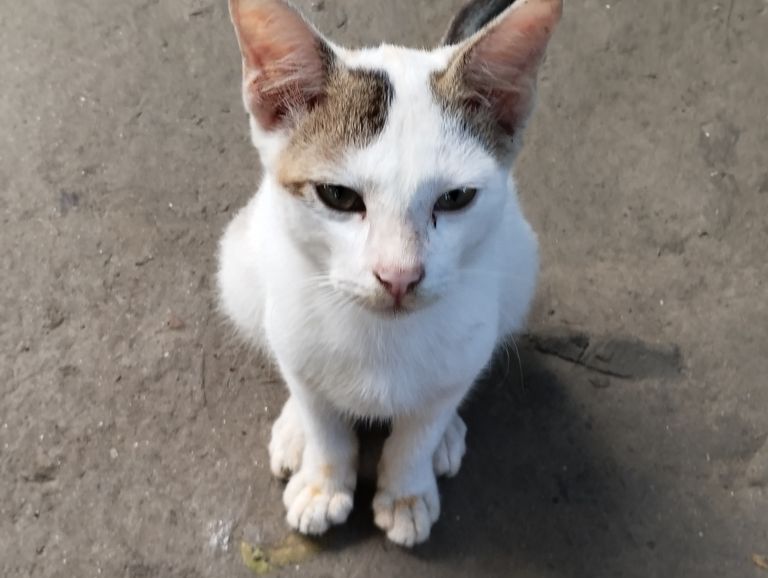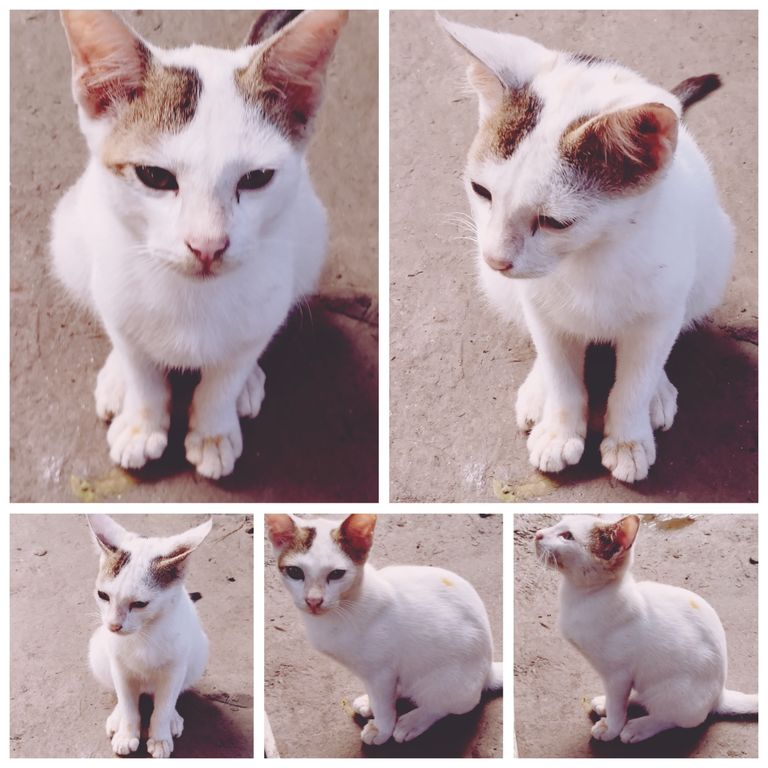
What Hadith Says About Keeping Cats as Pets.
Cats are among the most beloved animals in Islam, and they have a special place in the hearts of many Muslims due to the compassion the Prophet Muhammad (PBUH) showed toward them. The Hadith literature contains several references to cats, demonstrating the respect and care Muslims should have for them. This article will explore what Islamic teachings, especially Hadith, say about keeping cats as pets and the guidance it provides on how to treat these beautiful creatures.
The Role of Cats in Islam
Islam encourages kindness and compassion towards all of Allah’s creations, including animals. Cats, being clean and friendly creatures, are particularly admired in Islamic tradition. The Prophet Muhammad (PBUH) himself was known for his gentle treatment of cats, setting a powerful example for Muslims. Cats are not considered impure animals in Islam, which means they are not "najis" or ritually impure, unlike some other animals. This respect for their cleanliness is one reason why keeping cats as pets is generally permissible in Islam.
Hadith on Cats: Compassionate Treatment
One of the most famous stories in Hadith literature is the Prophet Muhammad’s (PBUH) affection for his cat, Muezza. According to tradition, once while the Prophet was performing ablution (wudu), Muezza was sleeping on the sleeve of his robe. Instead of disturbing the cat, the Prophet carefully cut off the part of the sleeve on which Muezza was sleeping so that he could continue with his prayer without waking her. This act of kindness illustrates the importance of treating animals, especially cats, with respect and consideration.
Another Hadith from Sahih Bukhari (Vol. 3, Book 40, Hadith 553) narrates a story about a woman who was severely punished because she kept a cat locked up, preventing it from eating or drinking. The Prophet Muhammad (PBUH) condemned such cruelty, and the woman was reportedly punished in the afterlife for her actions. This story highlights the severe consequences of mistreating animals, especially through neglect or cruelty.
The Prophet’s (PBUH) treatment of cats serves as a reminder that all creatures deserve to be treated with compassion and respect. This story emphasizes that Muslims must ensure the well-being of any animals under their care, whether they are pets or stray animals.
Islamic Guidance on Keeping Cats as Pets
- Cats Are Clean Animals: In Islam, cats are not considered impure. Their saliva is not viewed as "najis" (impure), and they are generally seen as clean animals. This makes it permissible to keep them as pets, and Muslims can allow them in their homes without concern for impurity. However, like with any pet, owners are responsible for their cat’s hygiene and general health.
- Providing Food and Water: Providing adequate food and water to pets is emphasized in Islam. As seen in the Hadith about the woman who mistreated her cat, neglecting a pet’s basic needs is viewed as sinful. Therefore, Muslims who keep cats as pets should ensure that their cats are well-fed and have access to clean drinking water.
- Medical Care: Islam encourages believers to care for their pets' health. Taking a cat to a veterinarian for regular check-ups, vaccinations, and treatments when needed aligns with the principle of ensuring the well-being of any animal under one’s care. Neglecting an animal’s health is discouraged in Islam, as it goes against the principle of kindness.
- Showing Patience and Kindness: Islam emphasizes patience and kindness, and this includes how we treat animals. Cats, like all animals, may sometimes act in ways that inconvenience their owners, such as knocking over items or scratching furniture. Islam teaches that we should respond with patience and not resort to harming the animal. This guidance extends beyond mere ownership and speaks to a compassionate mindset that Islam encourages in all aspects of life.
- Maintaining a Clean Home: While cats are not considered impure in Islam, keeping a clean home is still essential. It is advisable to maintain hygiene by cleaning areas where the cat frequently rests or eats. This ensures a harmonious and respectful coexistence with the pet, keeping in line with Islamic values of cleanliness.
Misconceptions About Cats in Islam
There are some misconceptions about cats in Islam, particularly regarding whether they affect the purity of prayer spaces or food. However, Islamic scholars have generally agreed that cats do not make a place or food impure. This stems from the Hadith where the Prophet Muhammad (PBUH) allowed cats to roam freely in his home, showing that their presence does not affect the purity required for prayer. Additionally, their saliva is not considered "najis," which reassures Muslims that sharing a space with a cat does not interfere with their worship.
The Spiritual Lessons of Having Cats
Cats not only bring joy and companionship but also serve as a reminder of the responsibility Muslims have toward all living beings. By caring for cats, Muslims can embody the values of mercy, compassion, and kindness that are integral to Islamic teachings. The gentle treatment of animals is part of broader Islamic values, teaching believers to be mindful of the welfare of all creatures, big and small.
In caring for a cat, Muslims can reflect on the blessings of companionship and the importance of being a steward of Allah’s creations. Animals like cats provide companionship, but they also require attention, patience, and understanding. Through caring for them, Muslims can develop a stronger sense of empathy and responsibility.
Conclusion: Cats as Beloved Companions in Islam
The Hadith encourages Muslims to treat all creatures with kindness, especially animals under one’s care, such as cats. Through the Prophet Muhammad’s (PBUH) own example, Muslims learn the importance of treating cats with compassion and care. The stories from Hadith serve as a timeless reminder that pets, especially cats, are to be respected, loved, and well cared for.
In summary, Islam allows the keeping of cats as pets and provides a compassionate framework on how to care for them. The Prophet’s (PBUH) kindness towards animals is a beautiful example that resonates with Muslims, teaching them that mercy and respect for all of Allah's creations is a fundamental aspect of the faith. Thus, caring for a cat or any animal is a means to earn Allah’s pleasure, embodying the Prophet’s (PBUH) legacy of mercy towards all creatures.
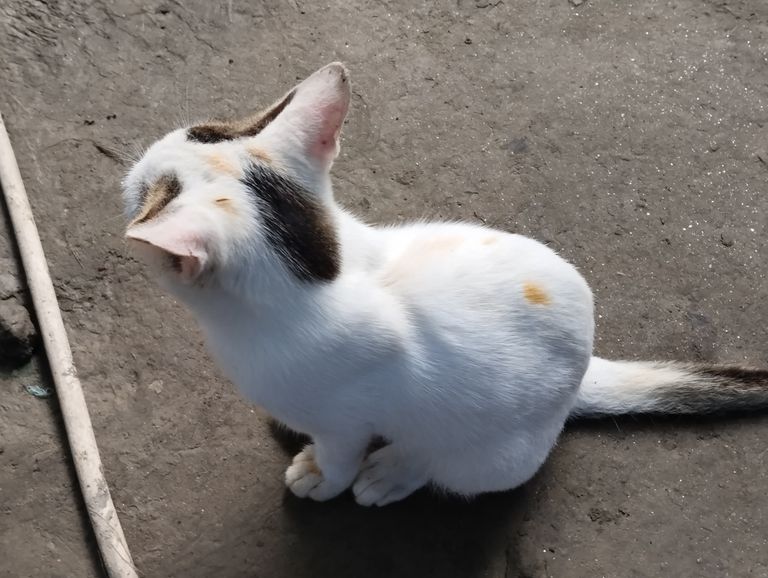
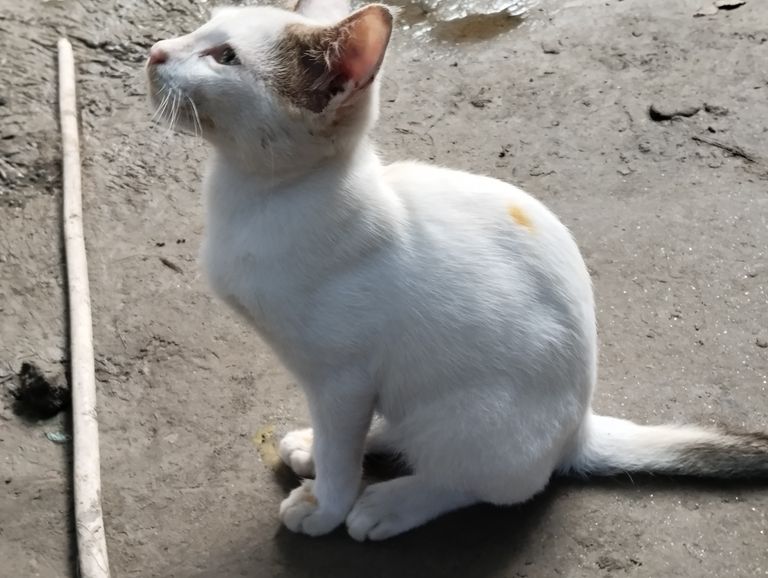
The Benefits of Keeping Cats as Pets
Cats are among the most beloved pets worldwide, captivating hearts with their unique blend of independence and affectionate personalities. Their companionship, low-maintenance lifestyle, and beneficial influence on mental and physical well-being make them ideal pets for a range of households. This article explores the myriad benefits of keeping a cat as a pet, from health improvements to environmental impact.
- Low-Maintenance Companionship
Cats are known for their independence, which makes them perfect for those who may not have the time for high-maintenance pets. Unlike dogs, which require regular walks and extensive training, cats are generally self-sufficient. They instinctively use litter boxes, groom themselves, and often entertain themselves with minimal intervention. For busy people or those who travel frequently, cats are an ideal choice as they’re less likely to suffer from loneliness or separation anxiety.
- Stress Reduction and Emotional Support
The soothing presence of a cat can be a wonderful stress reliever. Studies show that petting a cat can lead to a reduction in cortisol, the stress hormone, and an increase in the production of serotonin, a mood-enhancing hormone. This is one reason why cat owners often report feeling calmer and more relaxed. Moreover, cats can provide emotional support, offering comfort during challenging times, whether through a gentle purr or simply their calming presence nearby.
- Health Benefits: Heart Health and Reduced Allergy Risks
Owning a cat has been linked to numerous health benefits. Studies indicate that cat owners have a reduced risk of heart attacks and cardiovascular issues, likely due to the stress-relieving effects of feline companionship. Additionally, research suggests that children exposed to cats from a young age are less likely to develop allergies. Exposure to pet dander and other allergens may help strengthen a child's immune system, reducing their susceptibility to allergies as they grow.
- Enhanced Mental Well-being
The mental health benefits of having a cat are well-documented. Cats provide companionship that can help reduce feelings of loneliness, depression, and anxiety. Many cat owners feel that the company of their cat creates a soothing and reassuring atmosphere, which is especially beneficial for individuals who live alone or struggle with social interaction. A cat’s gentle presence and unique personality can bring joy and laughter, lifting the spirits of those around them.
- Environmentally Friendly Pets
Cats generally have a smaller ecological footprint compared to larger pets, particularly dogs. They require less food, and as obligate carnivores, they typically consume a diet focused on meat with fewer fillers. Additionally, cats have minimal waste, and their food production is generally less taxing on the environment compared to other pets. For eco-conscious pet owners, cats are a responsible choice.
- Natural Pest Control
One of the practical benefits of owning a cat is their instinct for hunting. Cats naturally chase and catch small pests, such as mice and insects. Their very presence often deters pests from entering the home, reducing the need for chemical pest control methods that can be harmful to the environment. Cats are also observant and will often alert their owners to any unusual activity in the house, making them good companions for home protection in a unique way.
- A Lifelong Bond
The relationship between a cat and its owner can be incredibly rewarding. Cats have a unique way of forming bonds; they may appear aloof, but many cat owners know that cats can be deeply affectionate. They communicate in subtle ways, whether through gentle head butts, curling up on their owner’s lap, or a soft purr that indicates contentment. Cats are capable of forming lasting emotional bonds, offering companionship and loyalty to their human friends.
- Fostering Responsibility and Routine
Caring for a cat requires a certain level of responsibility and commitment, which can be beneficial for families with children. Feeding, grooming, and spending quality time with a cat teaches children the importance of care, empathy, and commitment. Unlike more demanding pets, cats still require attention and consistency, making them excellent pets for teaching responsibility while still being manageable.
- Suitable for Small Living Spaces
For those living in apartments or smaller homes, cats are an excellent pet choice. They don’t need a yard to play in and are comfortable living in smaller, indoor environments as long as they have adequate stimulation and exercise. Indoor cats can be entertained with toys, scratching posts, and window perches, where they can watch birds or outdoor scenery. Their adaptability to different living spaces makes them ideal pets for city dwellers or people with limited outdoor access.
- Boosting Social Interaction
Interestingly, owning a cat can also open up social opportunities. Many people are passionate about their pets, and cat owners often connect over shared interests. Social media platforms are filled with communities where cat enthusiasts share tips, stories, and photos, which can lead to friendships and a sense of belonging. Additionally, discussing pets can serve as an icebreaker in social situations, leading to new friendships and social interactions.
Conclusion
Cats offer a unique blend of companionship, health benefits, and minimal environmental impact, making them a valuable addition to any household. Their calming presence, low maintenance needs, and the strong emotional bonds they form with their owners enrich lives in ways that few other pets can. Whether you’re looking for a companion to reduce stress, a pet that adapts to small spaces, or simply a low-maintenance friend, cats make a perfect choice. With their unique personalities and independent nature, cats truly bring a balance of joy and comfort into the lives of their human companions.

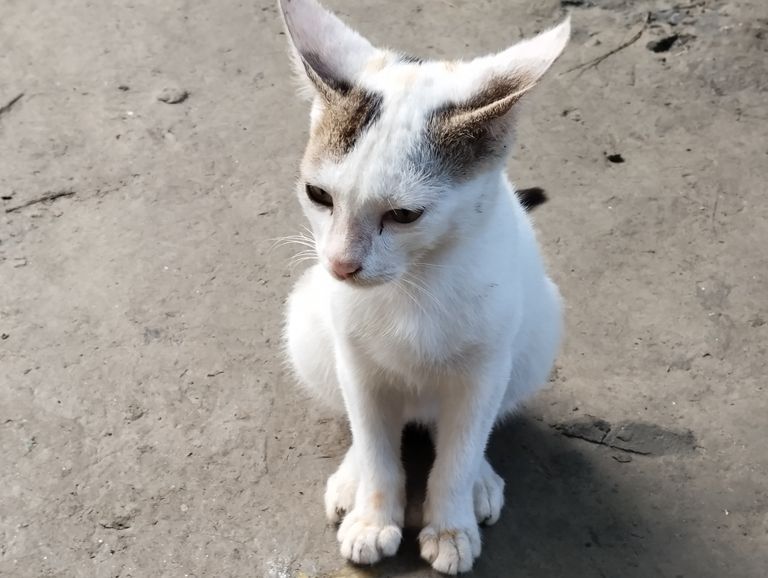
Here's a blog on how to take care of a kitten, with essential tips for ensuring it stays healthy and happy.
Caring for Your Kitten: A Comprehensive Guide
Bringing home a kitten is a heartwarming experience filled with joy and excitement. These tiny bundles of fur require specific care and attention to grow into healthy, happy adult cats. Here’s a comprehensive guide to help you care for your kitten in its first few months.
- Preparing for Your Kitten’s Arrival
Before bringing your kitten home, make sure to prepare a safe and comfortable space. Here are some essential items to have ready:
Litter box: Choose a small litter box that’s easy for your kitten to access. Unscented, clumping litter is often the best option for young cats.
Food and water bowls: Shallow dishes make it easier for kittens to eat and drink.
Kitten food: Kittens have different dietary needs than adult cats, so choose a high-quality kitten food recommended by veterinarians.
Toys: Kittens are full of energy! Provide a variety of safe toys to stimulate their mind and encourage healthy play.
- Diet and Nutrition for Kittens
Kittens need a diet rich in protein, fats, and essential nutrients to support their rapid growth and development. Here’s what you should know:
Kitten-specific food: Kittens require food with a higher calorie and protein content than adult cats, so always choose a food formulated for kittens.
Feeding schedule: Most young kittens need to be fed three to four times a day. As they grow, you can gradually reduce this to two meals a day by the time they reach six months.
Fresh water: Always have fresh water available, as hydration is essential for their health. Avoid giving them milk, as most cats are lactose intolerant.
- Health and Veterinary Care
Proper veterinary care is essential for your kitten’s health. Schedule a vet appointment as soon as you bring your kitten home, and make sure to follow up on recommended vaccinations and health checks.
Vaccinations: Kittens typically need vaccinations starting at 6–8 weeks. Essential vaccinations include feline distemper, calicivirus, and rabies.
Deworming and flea control: Kittens are often born with worms, so deworming is essential. Flea control is also crucial, as fleas can quickly make a kitten sick.
Spaying or neutering: If your kitten is not already spayed or neutered, plan to have this done around five to six months old. It helps reduce health risks and controls the pet population.
- Litter Training
Kittens are naturally inclined to use a litter box, making litter training relatively easy. Follow these steps to ensure success:
Introduce the litter box early: Show your kitten the litter box as soon as they arrive. Gently place them inside, especially after meals or naps.
Maintain cleanliness: Scoop the litter box daily to keep it clean and inviting. Kittens may avoid dirty litter boxes.
Use an appropriate litter: Avoid heavily scented or dusty litters, as they may deter your kitten.
- Socialization and Playtime
Socialization is key to raising a confident and well-adjusted cat. Playtime is essential not just for bonding, but also for teaching your kitten about boundaries and behavior.
Gentle handling: Spend time petting, holding, and talking to your kitten. This helps them become accustomed to human contact.
Safe toys: Avoid toys with small parts that can be swallowed. Wand toys, balls, and scratching posts are excellent choices.
Play daily: Engage your kitten in interactive play sessions to help them burn off energy. This can also prevent behavioral issues caused by boredom.
- Grooming and Hygiene
Grooming is essential for your kitten’s hygiene and health. Here are some basic grooming tasks:
Brushing: Regular brushing helps keep their coat clean and reduces shedding. Start with a soft brush to get them used to the process.
Nail trimming: Kittens have sharp claws that need regular trimming. Use a small, pet-safe nail clipper, and be gentle.
Dental care: Start brushing your kitten’s teeth early to prevent dental issues. Use a cat-safe toothbrush and toothpaste.
- Creating a Safe Environment
A young kitten is curious and may get into trouble. Make sure your home is kitten-proofed:
Remove hazardous items: Put away small objects, cords, and toxic plants that may pose risks.
Avoid dangerous spaces: Keep cabinets, washers, and dryers closed, as kittens may explore these spaces.
Supervision: Until your kitten is more familiar with the surroundings, supervise them, especially around potentially dangerous areas.
- Building a Routine and Bonding
Kittens thrive on routines, which provide a sense of security and help establish good habits.
Set feeding times: Stick to a regular feeding schedule to help your kitten feel secure.
Designate a quiet sleeping area: Kittens need a lot of rest. Make sure they have a comfortable, quiet place to sleep undisturbed.
Spend quality time: Bonding with your kitten through play, petting, and talking strengthens your relationship.
- Common Kitten Behavioral Issues and Training Tips
It’s common for kittens to scratch furniture, bite during play, or display other challenging behaviors. Here’s how to handle these issues:
Redirect scratching: Provide scratching posts and train your kitten to use them instead of furniture. Reward them for using it.
Discourage biting: If your kitten bites during play, redirect them with a toy. Avoid using your hands as playthings, as this encourages biting.
Litter box problems: If your kitten isn’t using the litter box, make sure it’s clean, accessible, and in a quiet area.
- Preparing for Adulthood
By following these guidelines, you’ll help your kitten grow into a well-adjusted, healthy adult cat. Continue to provide regular vet check-ups, a balanced diet, and a loving home to ensure a lifelong bond with your furry friend.
Conclusion
Caring for a kitten requires time, patience, and dedication, but the rewards are well worth it. By creating a safe, nurturing environment and meeting your kitten’s needs, you’re setting the foundation for a long, happy, and loving relationship. Enjoy every moment with your new companion as they grow into a cherished member of your family!
This guide should give you everything you need to care for your kitten as they grow and thrive.
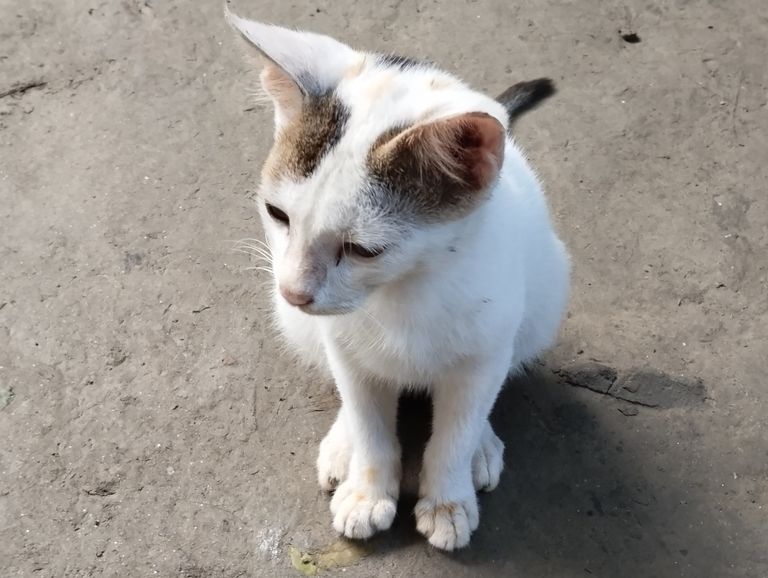
The Ultimate Guide to Your Cat's Favorite Foods
Cats are fascinating creatures, each with their own quirky personalities, behaviors, and preferences – especially when it comes to food. Unlike many pets, cats have a more refined palate, which can make it challenging to figure out exactly what they enjoy eating. If you’re a cat parent looking to give your furry friend a treat, here’s everything you need to know about a cat's favorite foods and nutritional needs.
- Understanding Cats’ Dietary Needs
Before diving into specific favorite foods, it’s essential to understand what cats require in their diet. Cats are obligate carnivores, meaning they rely primarily on nutrients found in animal tissue. This dependency on meat has evolved due to their natural hunting instincts and body composition. Here are the primary components of a cat’s diet:
Protein: Essential for muscle development and maintenance. Cats need high-quality protein sources, like those found in meats and fish.
Fats: Provide energy and help in the absorption of certain vitamins. Omega-3 and Omega-6 fatty acids are essential for skin and coat health.
Vitamins and Minerals: Taurine (an amino acid essential for heart and vision health), Vitamin A, Vitamin D, and calcium are vital for cats.
Water: Cats naturally have a low thirst drive, which is why wet foods can be beneficial for keeping them hydrated.
- Top Foods That Cats Love
Now that we know the basics of what cats need, let’s look at some foods they simply can’t resist. While individual preferences may vary, these foods are generally well-loved by felines.
a) Fish (Tuna and Salmon)
Fish is one of the most popular choices for cats. The strong smell and flavor of tuna and salmon are hard for cats to resist. These fish are also high in Omega-3 fatty acids, which support skin, coat, and joint health. However, it’s essential to serve these in moderation due to the high mercury levels in some fish.
b) Chicken
Cooked chicken is a cat favorite. It provides lean protein without much fat, making it an excellent choice for both adult cats and kittens. Chicken is easily digestible and contains a balanced amino acid profile essential for muscle growth.
c) Turkey
Turkey, like chicken, is another lean protein source cats enjoy. Many pet owners use turkey as a treat or even as a primary protein in homemade meals. It’s best to stick to unseasoned turkey since spices and added flavors can upset a cat’s stomach.
d) Liver
Liver is a nutritional powerhouse, full of essential vitamins like Vitamin A and iron. Cats, especially those who enjoy more intense flavors, typically love liver. However, liver should be offered in moderation, as too much Vitamin A can be harmful.
e) Eggs
Eggs provide high-quality protein and fats, making them a great treat for cats. Scrambled or hard-boiled eggs without seasoning can be served to your cat in small amounts. Some cats may take a while to warm up to eggs, but many enjoy the taste and texture.
f) Commercial Cat Treats
Various commercial treats are specifically formulated for feline tastes. These treats are convenient, and you can find options with added nutrients, like dental chews to support oral health or low-calorie options for overweight cats.
g) Catnip
While not a food, catnip is worth mentioning. Many cats go wild for catnip, and it can be sprinkled on food to make it more appealing. Catnip triggers a euphoric response in cats, although some might not respond to it.
- Foods to Serve Occasionally
These foods are safe for cats but should only be given occasionally.
a) Cheese
Some cats love cheese, especially harder cheeses like cheddar. Cheese is high in protein, but most cats are lactose intolerant, so it’s best to offer only a small amount.
b) Cottage Cheese or Yogurt
Similar to cheese, small amounts of cottage cheese or plain yogurt can be okay for cats. These can sometimes aid digestion due to the probiotics, but always check that it’s plain and without added sugar.
c) Pumpkin
Plain, cooked pumpkin is a great fiber source and can help with digestive issues. Some cats enjoy the taste, and a spoonful can be added to their regular food.
d) Blueberries or Melon
These fruits are safe in small quantities and are packed with antioxidants. While not all cats enjoy fruit, a few do appreciate the occasional blueberry or piece of melon as a treat.
- Foods to Avoid
While there are many foods cats can enjoy, there are also a few to avoid for their health and safety.
Onions and Garlic: These are toxic to cats and can cause anemia.
Chocolate and Caffeine: Chocolate contains theobromine, which is toxic to cats, and caffeine can cause restlessness and rapid breathing.
Alcohol and Raw Dough: Even a small amount of alcohol is dangerous for cats, and raw dough can expand in their stomachs.
Grapes and Raisins: These can lead to kidney failure in cats.
- Wet vs. Dry Food: Which Do Cats Prefer?
Cats’ preferences between wet and dry food can vary, but wet food generally has a stronger appeal due to its smell and texture. Wet food also provides additional moisture, which helps with hydration. However, some cats love the crunch of dry kibble, which can be beneficial for dental health. A balanced diet often includes a combination of both.
- Tips for Feeding Picky Cats
If your cat is picky, here are a few strategies to make meals more enjoyable:
Experiment with textures: Some cats prefer pate, while others like chunks or shreds.
Serve food at room temperature: Cats often prefer food that mimics the warmth of freshly caught prey.
Rotate proteins: Varying between chicken, fish, and turkey can keep meals interesting.
Use feeding puzzles: Engage their hunting instincts by making them work a bit for their food.
- Making Meals Special: Homemade Cat Food Recipes
If you’re interested in preparing homemade meals, here’s a simple recipe that most cats enjoy.
Chicken and Rice Cat Meal
Ingredients:
1/4 cup cooked chicken, shredded
1 tablespoon cooked rice
1/2 teaspoon of fish oil or cat-safe fish oil supplement
Instructions:
- Mix the ingredients together until well combined.
- Serve at room temperature, and store any leftovers in the fridge for up to two days.
This meal offers a balance of protein, carbs, and fats that many cats find delicious.
Conclusion
Understanding your cat’s favorite foods is about recognizing their unique preferences and dietary needs. From fish to chicken to the occasional piece of cheese, cats have a range of tastes. However, a balanced diet that includes high-quality proteins, fats, and essential nutrients is crucial for their health. By offering a mix of these favorites and paying attention to what your cat enjoys, you can ensure they stay happy and healthy for years to come.
